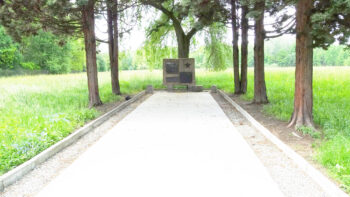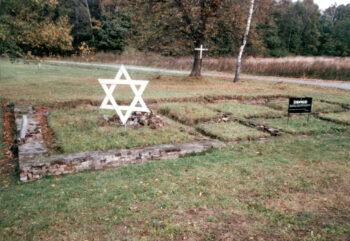Bunkers
Terms
Similar to the English term bunker, the German term Bunker can refer to three things:
- A shelter facility protecting from projectiles, bombs, shrapnel or noxious gases in times of armed conflicts.
- Bulk-item storage facilities, such as potatoes, coal or coke. The German language even has a verb for this: einbunkern, to store in bulk.
- Facilities to incarcerate offenders, similar to a prison.
Within the context of the Holocaust, the term “bunker” plays a major role in the orthodoxy’s narrative on mass gassings at the Auschwitz Camp.
All three uses of the term as listed above are documented in the archival material about the former Auschwitz Camp. The camp had a potato bunker; a former ammunition-storage bunker turned into a crematorium (Crematorium I of the Main Camp); many air-raid shelters referred to as bunkers; and finally, the Auschwitz Main Camp had a detention facility in the basement of its Block 11, often referred to as the “bunker,” in which inmates who had committed some violation of the law or camp rules were locked up.
No documents exist on Auschwitz which refer to any mass gassings, hence no documents exist linking any facility called “bunker” to mass gassings either. That link was first made in late 1941 by propaganda reports sent by the Polish underground to London. These reports claimed that Soviet PoWs and Polish inmates had been gassed in early September 1941 in the basement detention cells of Block 11 at Auschwitz. This was the birth of the myth of the so-called “first gassing” at the Auschwitz Camp. (For more on this, see the entry dedicated to this event.) However, this is said to have been a singular event, and this detention bunker is not normally referred to when the “bunkers” of Auschwitz are mentioned. This term refers to two Polish farmhouses just outside the perimeter of the Birkenau Camp. All Polish civilian buildings in the area of that camp and its vicinity had been expropriated by the SS. Two of these buildings are said to have been converted to mass-gassing facilities.
Propaganda History
As two Zyklon-B delousing facilities were built at the Birkenau Camp in 1942, Polish underground reports started spreading the rumor that homicidal gassing facilities had been set up at Birkenau. In some reports, their description suspiciously resembled that of the new delousing facilities. According to other reports, the mass-murder facilities were instead set up in a few cottages. This was possibly inspired by a delousing facility for the SS guards that had been set up in an old Polish building outside the camp. The term “bunker,” however, was never used in any wartime report or testimony in connection with gassing facilities. Moreover, the various reports and testimonies were too disparate to make sense of them.
This changed only when the Soviets occupied the Auschwitz Camp and started interrogating former inmates. One of them – Szlama Dragon – proved particularly cooperative. In a statement of late February 1945, he gave very detailed descriptions of two alleged gassing facilities outside the Birkenau Camp. However, it took a second interrogation in May of that year, this time by Polish investigative judge Jan Sehn, to plant the term “bunker” for these alleged facilities into Dragon’s mind. Thus, “Bunker 1” and “Bunker 2” were finally born.
Mainly based on Dragon’s version, the story of the “bunkers” of Birkenau entered the orthodox narrative, and solidified in a story that was mainly shaped by Polish historian Danuta Czech in her Auschwitz Chronicle. She forced a “convergence of evidence” by cherry-picking from a range of contradictory witness statements those features that fit her preconceived notion, invented some data where none was available, while discarding everything that refuted her storyline or revealed her evidence as unreliable.
Dragon’s two testimonies are partially contradictory, stand in contrast to other witness statements about these claimed facilities, have physically impossible and even absurd aspects, and are in conflict with extant physical evidence. (For more details on his testimony, see the entry on Szlama Dragon.)
Current Orthodox Narrative

 1992 photo of the ruins of a building west of the Zentralsauna, alleged to have been “Bunker 2.”
1992 photo of the ruins of a building west of the Zentralsauna, alleged to have been “Bunker 2.”The current orthodox narrative regarding the two bunkers of Birkenau is summarized and scrutinized in the entry on the Auschwitz Main Camp, section “Current Orthodox Narrative,” Points 4, 5 and 11. The bunkers retain importance for the orthodox narrative because they were the alleged site of up to 230,000 gassing fatalities (60,000 total at Bunker 1, and 170,000 total at Bunker 2). And indeed, for the initial year of 1942, the two bunkers combined allegedly gassed some 140,000 Jews – far more than in Crematorium I (20,000). In fact, both bunkers allegedly gassed overall more people than Crematorium I (20,000), Crematorium IV (30,000) and Crematorium V (50,000) together. This underscores the importance of these bunkers for the orthodox narrative.
In reality, however, we have no reliable evidence that “Bunker 1” ever existed, while a building did exist where “Bunker 2” is said to have been, but its foundation walls disprove all witness testimonies.
For other witnesses on the alleged bunkers and an assessment of their testimonies, see the section “Auschwitz” in the entry on witnesses, since most witnesses testifying about Auschwitz also had something to say about these alleged bunkers.
(For more details on the “Bunkers of Auschwitz,” see Mattogno 2016f; 2021, pp. 119-217.)

You need to be a registered user, logged into your account, and your comment must comply with our Acceptable Use Policy, for your comment to get published. (Click here to log in or register.)